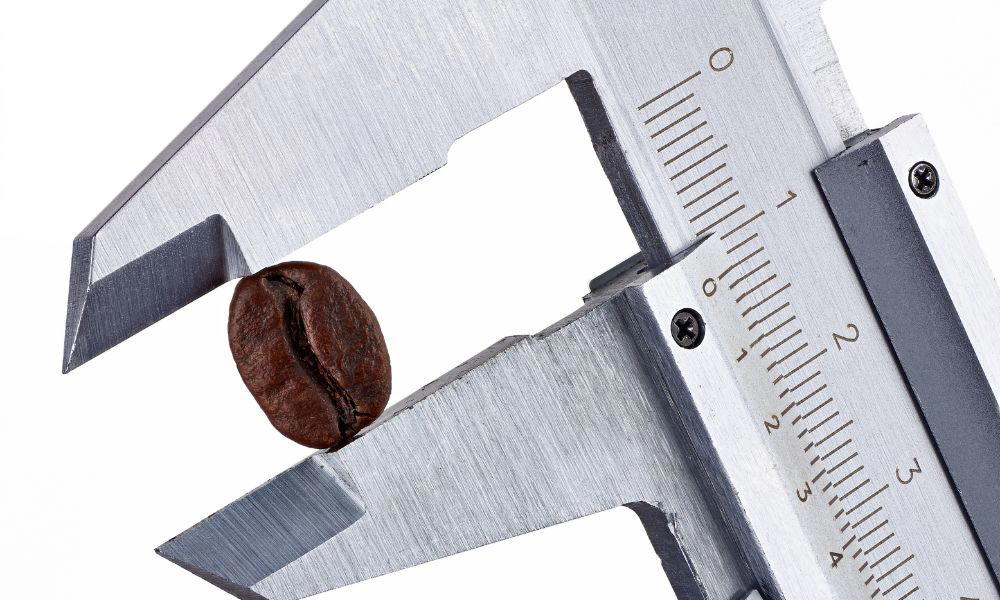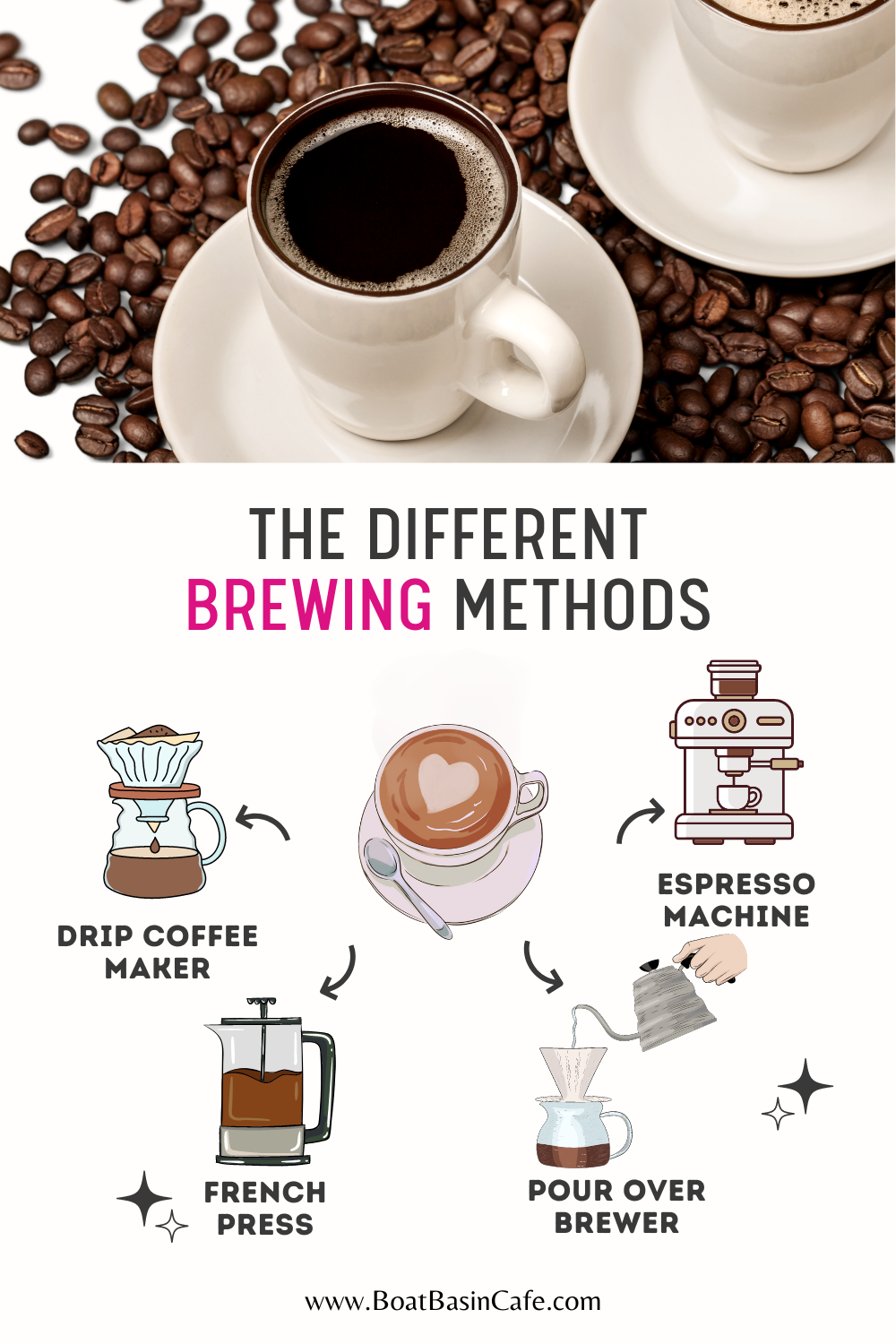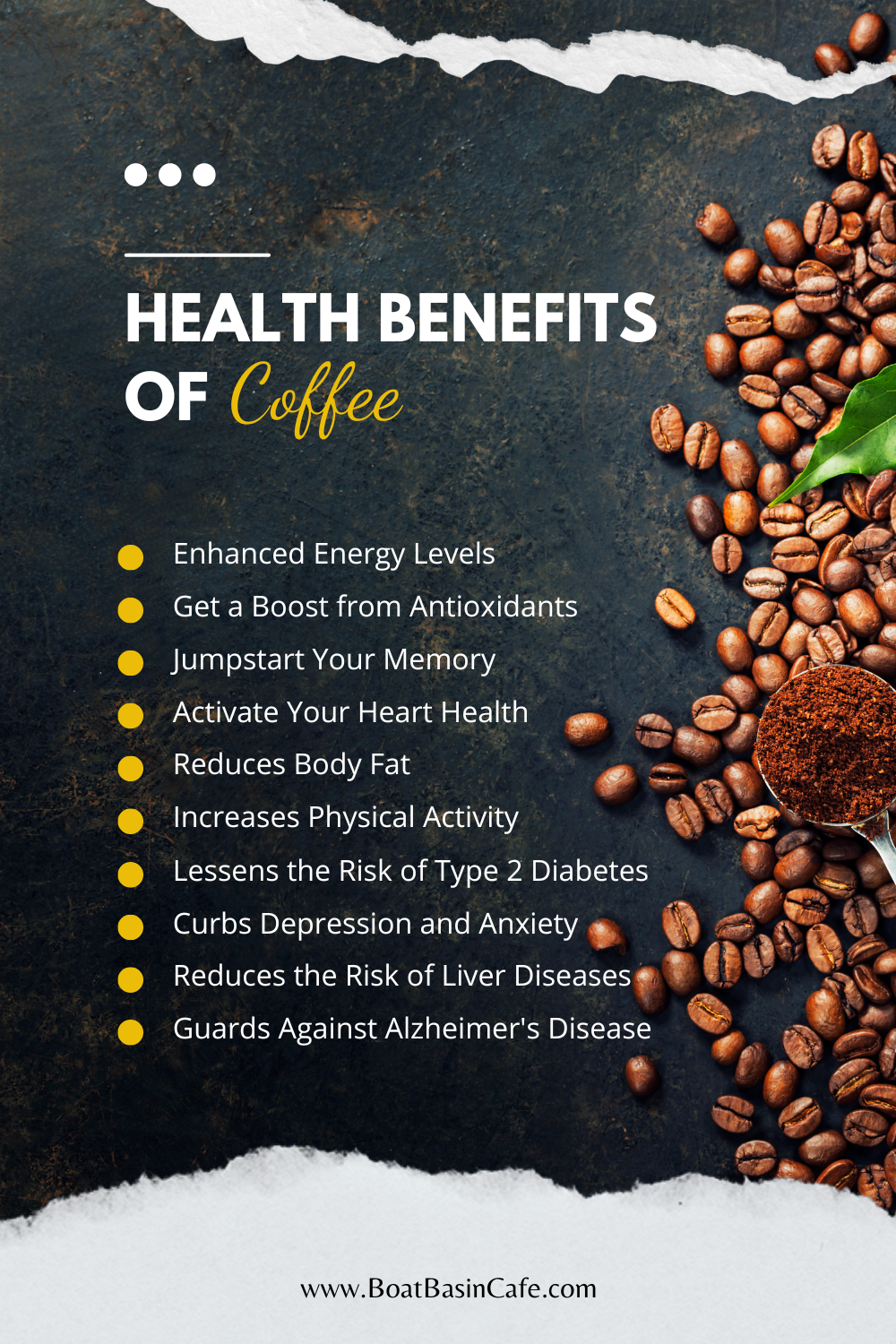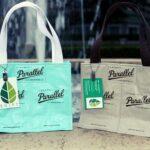Wondering how much coffee you need for a gathering? We’ve got you. We cover everything you need to know about measuring coffee in this article!
For 12 cups of coffee, it’s actually quite straightforward.
How Many Scoops of Coffee for 12 Cups?

If a scoop of coffee equates to two tablespoons, then ideally, you can put 6 scoops of coffee for 12 cups. This means you’re going to have one coffee scoop for two cups of coffee.
However, we’re basing this off of ground coffee — it’s different if we’re talking about flavored coffee, whole coffee beans, and other coffee measurements! You also have to factor in different brewing methods, cup size, and coffee strength.
Let’s put this all into context by diving into the article below.
Why Measure Coffee?

Why should we bother measuring coffee in the first place? Well, there’s a lot that can result from the measurements, including the following:
Taste Consistency
It’s one of the things that keeps us coming back to coffee shops: consistency.
We know the taste of each consistent cup of coffee that they make. When you make coffee at home, the resulting taste varies each time. Maybe you put in too much ground coffee, or too little. Maybe you overshot the water used, or you were too cautious and put only a small amount.
Measuring coffee and water used produces consistent, brewed coffee every day.
Adjusting Strength
Coffee makers aren’t just in the craft of making coffee for the fun of it. I’m sure you want to unlock the benefits of coffee per cup, too!
The strength, then, matters a lot when making your perfect cup. If you want a stronger cup of coffee for the jolt of energy in the morning, measuring out ground coffee is necessary. If you only want a light brew per cup, you have to take into account what kind of beans to use and how to brew them properly.
How to Adjust the Amount of Coffee for Different Brewing Methods

There are multiple methods in brewing coffee grounds. The brewing method affects the amount of caffeine that’s extracted from your coffee, so it also helps if you’re looking for the perfect coffee taste.
| Method | Yield | Amount of Coffee (tablespoons) |
|---|---|---|
| Drip Coffee Maker | 2 to 12 cups | 12 tablespoons (6 scoops) for 12 cups |
| French Press | 1 cup | 2 tablespoons for 1 cup |
| Pour Over Brewer | 1 cup | 1 level scoop for 1 cup |
| Espresso Machine | 1 shot | 20-30 grams (around 20-30 seconds to pull) |
01 Drip Coffee Maker
Your standard drip coffee maker can yield anywhere from 2 to 12 cups of coffee. Chances are, a drip coffee maker is what you’ve got in your kitchen!
Using a drip coffee maker is quite simple. You add water into the attached water reservoir, then add a filter – either a reusable or disposable one. Make sure you have the right coffee to water ratio. Add the coffee grounds to the filter.
If you’re making 12 cups of coffee, you’re likely to use around 12 tablespoons of coffee, or six scoops. Press the brew button and you’re all ready to go!
02 French Press
A French press is simpler and distinct from the drip coffee maker. Instead of waiting for coffee brewing to finish, you pour coffee grounds into the French press before adding hot water. Be careful, however — the water should just be a little bit below the boiling point or it may taste burnt!
But it shouldn’t be that cool, either, or you risk getting weaker coffee. For a strong cup, good extraction is a must. Here’s the best ratio for French Press.
After letting the coffee grinds bloom, you press down on the French press and let the coffee grounds and water separate. You’re all done!
For a press, however, how many coffee cups you make is limited. It can contain, at most, more than one cup. So you’re only looking at around a single scoop of coffee for a single serving. Can you remember how many tablespoons that would equate to?
Yes, that’s right – just two tablespoons. It’s going to be time-consuming to make 12 cups of brewed coffee, but the taste is well worth it!
03 Pour Over Brewer
A pour-over brewer is one of the simplest ways to make strong coffee. You don’t need anything special — at most, you might want to invest in a gooseneck drip kettle. We’ll explain why below.
The brewing methods in a pour-over brewer is already in its name: pour-over. You get a coffee filter, add some coffee grounds, and slowly pour in the water for your coffee.
This brewing method should make use of wetting, or slowly immersing your coffee grounds in water.
This is why a gooseneck drip kettle is important. It allows you to control the distribution and amount of water you incorporate into the coffee brewing process.
However, this technique is also time-consuming for those who want to make twelve cups of coffee. One level coffee scoop is more than enough for one cup, and you need to repeat the coffee brewing process for each cup if you want to serve twelve people.
04 Espresso Machine
If you want the most caffeine out of your ground coffee, an espresso machine is the way to go. To use an espresso machine, you just have to follow these steps:
- Preheat the Machine
Begin the entire process by starting up your machine to warm it up. Make sure the entire machine is preheated.
- Grind Whole Beans
If you have ground coffee, that’s perfectly fine. However, the best cup of coffee includes grinding whole beans. Use a fine grind size and fill up your portafilter of around 20 grams of coffee. Brush away the excess coffee grounds to get ready for tamping.
- Tamp Evenly
It’s time to tamp! Make sure everything is evenly distributed before tamping down. Press the puck straight down, and spin it to polish the ground coffee off.
- Pull and Dial in the Shot
Allot around 20 to 30 seconds to pull your first shot! If you want to adjust the taste and strength of the next shot, take note of the dial of the pressure gauge — if you have one on your espresso machine, that is.
Like other brewing methods mentioned in this list, however, an espresso shot only serves one. If you’re looking to serve twelve cups of coffee, you’re going to have to take some time in serving each! A coffee pot with a drip coffee maker is the ideal one for you.
Other Factors That Affect Coffee Measurements

Cup Size
It might seem obvious, but this detail often escapes people’s minds. The size of your cup can determine how strong your coffee is or how much coffee you need to make. The coffee to water ratio is also affected.
If your cups are larger, expect to make more coffee — that means more coffee scoops and more water. If your cups are smaller, you can easily make twelve cups.
Type of Coffee Roast Can Affect the Amount Needed
Ideally, you start with whole bean coffee and make them into ground coffee or coffee grounds. What you have to look at now is the type of roast. This will have a direct link to its strength.
Light
A light roast is distinctive with its light brown color. There’s little to no oil on the coffee beans, and retain much more caffeine than you think. It’s a common misconception that light roasts have less caffeine that medium and dark roasts, but since they roast for far less time, they have more caffeine than others.
If you want a stronger cup of coffee, coffee ratios with a light roast will vary.
Medium
A medium roast is known for its brown, thick body and balanced flavors. They lose more caffeine in comparison to a light roast.
Dark
A dark roast comes in dark, blackened colors, with a glossy surface from the oils. The robust, full-body flavor is notable as well! It can be hard to achieve a proper dark roast without burning it, so you have to make sure you buy the right brands.
Spoon Size
This is also an obvious thing in measuring out how much coffee you need, but it does slip a lot of people’s minds! If your spoon or scoop size is bigger than usual, then you need less coffee per cup. If your spoon or scoop size is smaller, then you may need more than six scoops of coffee or more than twelve tablespoons of coffee.
The Golden Ratio Method
In measuring coffee, you can follow the golden ratio in figuring out how many tablespoons or coffee scoops you need per coffee cup.
The golden ratio is the following: 1 gram of coffee to 15-18 grams of water. This golden ratio achieves a good balance between the acidity and flavorful notes. Using more water can make the coffee weaker but much more bitter, while using less water than usual will lead to a concentrated, sour taste.
For more information on coffee ratio, you can check out the Specialty Coffee Association’s website. They’ve got everything you need to know about brew methods, cup measurements, and proper measuring tools!
Using a Scale to Measure Coffee
But how do you even achieve the golden ratio? It’s easy — use a coffee scale. Weigh out a gram of coffee to 15-18 grams of water, then multiply that amount by twelve if you need! That means you have to measure out water for twelve grams of coffee.
Coffee Beans Measurement Conversions
If you’re going to start questioning how much ground coffee you need per cup, it’s best to use a scale to weight it in grams instead of volume. We explain why below:
The Advantages of Using a Scale to Measure Coffee
Precision
With a scale, you can achieve the golden ratios of coffee per cup much easier. If you don’t remember, the golden ratio says that a gram of coffee needs 15-18 grams of water. That vaguely translates to one to two tablespoons of coffee for every six ounces of water.
However, if you want the coffee per cup to taste consistent and of quality, it’s best if you use a scale. Unlike with measuring coffee out with a measuring cup or a spoon, measuring with ground or bean weight makes sure you’re not prone to any variabilities.
Flexibility for Different Roasts
If you didn’t know, the different roasts means various densities for each coffee bean. For example, a dark-roasted bean will be less dense than a light-roasted bean due to a longer roasting process. How many grams it used to have as a green coffee beans has been burned off.
Grinds will also factor into how many grams or how many scoops you should put into a cup of coffee.
There will be gaps in the coffee grounds with a coarser grind, for example, and if you measure a cup of coffee in volume, you wouldn’t have an accurate measurement. It’s best to use a scale – for your coffee to water ratio and coffee scoops!
Taste Consistency
Having a scale as a technique to measure coffee per cup will make each coffee pot you make taste better. A little bit of precision goes a long way!
What to Consider When Brewing Coffee
The Equipment
Ideally, you want to have all the top-notch equipment you could have in your kitchen. This includes everything from the any coffee puck to grinders you use to the automatic drip coffee makers you will get.
When shopping for equipment, make sure you get ones that are good in terms of price for value.
You want something that’s of quality and is durable, but you also don’t want to break your wallet! You don’t need all the barista tools in your home as a beginner in coffee-making, but if it seems like a good investment, we won’t stop you.
Aside from having all the tools you need, it’s also important to have them all cleaned after each use.
Cleaning everything thoroughly after each use isn’t just hygienic – it also helps preserve the flavor of your coffee!
When you clean your equipment, you make sure that there are no grounds or oils left. If there are some left when you don’t clean up properly, you run the risk of leaving your coffee rancid and sour to taste.
Water Used
Coffee is 98% water, so it’s best if you’ve got quality water available for your coffee-brewing!
Ideally, you should have some sort of filtration system involved for your water. It can drastically improve the taste of your coffee.
The mineral build-up can affect the taste and once that’s removed, making coffee will be a much more pleasurable experience.
Avoid distilled or softened water for the best possible results.
Water Temperature
Water temperature is a whole different ball game when it comes to coffee-brewing. For optimal extraction, it’s best to have it within 195 to 205 degrees Fahrenheit!
Go too hot, and you’ll lose the taste quality, but if you go too low, the coffee will taste flat and under-extracted.
Of course, you should always make safety your top priority when brewing coffee. Make sure you have every precaution set first!
The Beans
Each coffee cup owes its taste to great beans. All coffee makers know this! You should check the following before even putting a coffee scoop into your coffee pot:
- Coffee’s country and region of origin
- Coffee’s variety
- Roast type
- Grind texture
There are a lot of choices out there, but don’t worry. You’ll get used to experimenting and trying out different variations of coffee — from the coffee grind to the roast. Enjoy different combinations as much as you can!
Freshness
If you can buy whole bean coffee, all the better. Ideally, you want to be the one roasting and grinding the coffee yourself, but that doesn’t stop you from buying pre-ground coffee, too!
Just make sure they store it properly so you know the coffee beans — or coffee grounds — are still fresh. Each fresh coffee scoop matters! We recommend looking for vacuum-sealed, opaque packaging for your freshly roasted or ground coffee.
Grind
The grind of your coffee beans also matters a lot! If you’re grinding the beans yourself, a burr grinder is preferable to a blade grinder.
It’ll give you a better grind more than anything else! You might get an under-extracted, more bitter taste if you let the coffee beans be ground too fine, so be careful.
Benefits of Drinking Coffee

- Enhanced Energy Levels
Suffering from a bout of the blues? Or maybe you just can’t seem to get your energy up after a long day at work. It may seem obvious, but a coffee pot is the answer to your troubles!
We can all thank caffeine, which is present no matter how much coffee you consume.
Coffee lovers all know the jolt of the mild stimulant that caffeine gives. However, you do have to be careful: while caffeine can wake you up when needed, you can also develop a higher tolerance to it over time.
How much coffee you might consume to develop a tolerance is unknown, but don’t overdo it to be safe! Stick to a cup or two a day.
2. Get a Boost from Antioxidants
Depending on the grams of coffee you take per cup, you have a high chance of benefiting from antioxidants coffee offers. The two main antioxidants coffee boasts are hydrocinnamic acids and polyphenols.
Hydrocinnamic acids neutralizes free radicals that may cause cancer. Meanwhile, polyphenols prevent a number of conditions, including heart disease and cancer!
The coffee industry is probably the biggest modern source of antioxidants out there.
How many coffee cups would be safe, then, to get the most antioxidants out of those ground beans? Around one to two cups consumed everyday should be fine.
Just remember that the antioxidants from coffee doesn’t replace antioxidants you get from whole grains and plant food!
- Jumpstart Your Memory
Studies have shown that moderate caffeine consumption can boost your memory. However, this study was based on caffeine capsules — at 200 milligrams each. There’s no telling how many coffee cups you need to be able to boost your memory properly, too.
Studies still do show the many active ingredients found in a cup of coffee. Your cup of coffee can contain chlorogenic acids, cafestol, kahweol, and trigonelline, all compounds that benefit your biological pathways in one way or another.
Aside from boosting your memory, coffee can also improve different parts of your brain function, including mood, reaction time, and attention.
If you want to strengthen your regular cup of coffee, get the measuring cup out or a coffee scale. Knowing how many coffee grounds go per cup can make a difference!
- Activate Your Heart Health
Surprisingly, your coffee scoops can also benefit your heart. In fact, a habit of coffee-drinking has been linked to a lower risk of coronary heart disease in women. In general, habitual drinkers of coffee can lower their risk of heart failure by 30%.
However, just because there’s evidence on how coffee scoops can lower your risk of heart diseases doesn’t mean you still shouldn’t be careful on how you drink those grams of coffee.
If you’re drinking it for heart health, don’t dress it up with sugar and cream. As much as possible, you want to get a cold brew or a plain Americano to get all the health benefits and none of the downsides.
Be careful about lattes or macchiatos, and you’re good to go!
There are some limitation to this study — for example, they didn’t distinguish between other brewing methods or other ways to get caffeine, like in energy drinks or tea. Just remember to keep those coffee scoops in moderation.
- Reduces Body Fat
Looking to lose those last few pounds? Several grams of coffee incorporated into your daily routine can help you with that!
There are studies that show how coffee can reduce fat, while at the same time, increase your metabolism per cup consumed.
Several stimulants found in coffee can boost your metabolism, including caffeine, theobromine, theophylline, and chlorogenic acid. The latter can even help the breakdown of carbs!
As coffee stimulates your nervous system, it also helps your cells to mobilize fat breakdown much faster.
It also increases your metabolic rate by a lot! You have more advantage of an increased metabolism with your cold brew if you’re young and lean — the effect is less pronounced with those who are older and/or obese.
- Increases Physical Activity
Maybe part of the reason why coffee can reduce body fat per cup is because it also increases physical activity. When consumed in doses of 3-6 mg/kg body mass, caffeine can greatly improve your exercise performance.
Get the coffee scale out for the coffee to water ratio for the measurements!
If you’re looking to enhance performance, coffee is the best suit for you. From your hormones, to muscle-building, and to fat-burning, coffee has got your covered.
For endurance exercises, 100 to 200 mg doses of caffeine combined with a carbohydrate-electrolyte drink can go a long way. Performance improvements are almost guaranteed.
Aside from endurance exercises, caffeine is also great for high intensity exercises, strength exercises, and fat loss.
- Lessens the Risk of Type 2 Diabetes
Now, we mostly have caffeine to thank for most of these benefits, right? But lessening the risk of type 2 diabetes is found in both caffeinated and decaffeinated coffee.
Due to the high amount of antioxidants found coffee, you can actually enjoy the lesser risk of disease with your typical dose of java.
However, if you already have Type 2 diabetes, caffeine may not be good for you.
It actually gets tougher to control your blood sugar! If you find it hard not to keep up with your coffee habit, it’s best to get a decaffeinated cup instead.
- Curbs Depression and Anxiety
Studies have found that caffeine can decrease the risk of developing depression — and at the very least, help out with symptoms. There’s even proof that a long-term relationship with coffee can lead to a lower risk for suicide as well!
However, if you’re experiencing symptoms of anxiety and depression, don’t go for a cup of coffee right away. In some cases, it may overwhelm you instead of helping you out! It also has a negative impact on sleep, which can easily lower your mood.
If you want to curb the symptoms of depression but not have palpitations, try watering your coffee down so the strength isn’t that high.
Look into your regular coffee to water ratio, use a dark roast, and try a different brewing method.
- Reduces the Risk of Liver Diseases
Another benefit caffeine has is lowering your risk of liver diseases. When the body digests caffeine, a chemical called paraxanthine is formed, which helps slow the growth of scar tissue in fibrosis.
This slowing down fights liver cancer, cirrhosis, fatty liver disease, and even hepatitis C.
Kahweol and cafestol are also to thank. They help fight cancer, and other acids in coffee can help fight hepatitis B.
- Guards Against Alzheimer’s Disease
Worried about being forgetful in old age? Lessen your risk with coffee. Regular caffeine consumption can lessen your chances in a lifetime to develop Alzheimer’s or dementia. It’s especially helpful during the pre-morbid phase!
How much ground coffee you need every day is in question, but just enough to make one to two cups should be fine.
How to Store Coffee Beans
You can either use a vacuum-sealed bag or keep whole coffee beans in an airtight and opaque container for long periods of time.
Roasted entire coffee beans can be vacuum-packed and stored for three to five months.
Roasted coffee beans can be frozen in vacuum-sealed bags for at least two to three years.
How to Select High-quality Coffee Beans
Several factors should be taken into account when searching for premium coffee beans.
One must first consider the origin of the beans. For the best coffee, seek out beans grown in places like Colombia, Ethiopia, and Jamaica. Second, picking the best bean is crucial. Compared to Robusta beans, Arabica beans are thought to be of higher quality and have a softer flavour.
The degree of roast should be considered next. You can pick beans that have been roasted to your prefered level of doneness, whether that’s light, medium, or dark. Beans that haven’t been roasted for more than two weeks aren’t worth buying, so keep that in mind. Find specialty-grade coffee beans with few flaws for the highest quality.
In closing, consider long-term effects. Pick a company that stands for sustainability and fair trade by looking for things like organic labels and fair trade practises. If you want to make sure the coffee is to your liking, you should try a small amount first.
Frequently Asked Questions
How many scoops of coffee do I put in a 12-cup coffee maker?
You can put six scoops of coffee for a 12-cup serving. In other words, you can put twelve tablespoons of coffee — or two tablespoons per scoop.
How many scoops of coffee do I put in for 10 cups?
You can put five scoops of coffee for a 10-cup serving. For tablespoons of coffee, it’ll be around 10 tablespoons — once again, it’s going to be two tablespoons per scoop.
How many cups of coffee is a scoop?
One scoop of coffee can yield two cups of coffee. However, there are variations to this due to the sizes of spoons and cups.
How many cups of coffee a day is healthy?
It’s okay to drink around two to four cups of coffee a day. It’s even better if you take it as a cold brew, as it’s the healthiest one you can drink! However, too much coffee can lead to adverse health risks, so remember to be careful.






